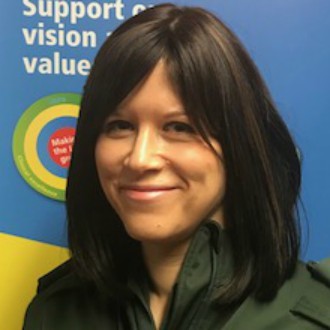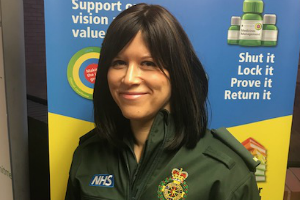Camden GP Dr Lyann Gross was concerned about the proportion of patients being taken to London’s overstretched emergency departments, noting that many of them would be more suitably treated in the community. She aimed to tackle that through collaboration with the London Ambulance Service, with impressive results.

Profile: Dr Lyann Gross
What’s your role? GP at the James Wigg Practice in Kentish Town, Camden, northwest London
How long have you been a GP? 6 years
How would you describe your practice? A large GP practice situated in Kentish Town Health Centre, which aims to have a holistic approach to healthcare. Many of our doctors have portfolio careers and other interests
What gets you up in the morning?
Good coffee, my four young boys jumping on me and never knowing what the day at work will bring!
What problems was the area facing?
With increasing pressure to manage demand and rising costs, it is important to ensure that the right people access the right care in the right place. Overall, there is too much demand on the emergency departments in London, with the London Ambulance Service (LAS) often taking patients to hospital when a GP may have the resources and skills to treat them in the community. Many 999 calls are not emergencies, yet patients with a medical need are commonly conveyed to ED by default.
This means patients’ best interests and preferences are not always met, and home- or community-based treatment options are not always offered. With elderly patients in particular, unnecessary hospital admissions following conveyance to ED is associated with bed blocking and increased mortality risk.
What did you do?
I worked 12 shifts with London Ambulance Service crews over a four-month period in early 2017. The aim of the project was to identify ways in which we can improve the delivery of emergency care, safely reduce the number of conveyances to EDs, reduce the burden on secondary care and improve patient satisfaction in a cost-effective manner.
Each shift was spent with different crews attending to unselected calls. Initially, this was to be a fact-finding mission as well as potentially identifying areas where a GP may be able to intervene at the intersection between 999 and primary care services.
At the same time, while on shift I aimed to be able to provide feedback and education to the individual crews that I worked with. My role transformed into one as a Camden GP LAS liaison.
As part of the programme, a number of LAS staff sat in on clinics and shadowed doctors at GP practices in the area, so the experience was reciprocal and crews could learn about and understand the role of local GPs.
What were the challenges?
The first step was to understand the perspective of LAS crews, and to reconcile that with the needs of patients, the demands and expectations of other stakeholders and the aims of the project.
Part of the problem with unnecessary conveyances to EDs is that ambulance crews need a clinician-to-clinician handover to be able to leave the scene (which can be over the phone). This is not necessarily understood by other health care professionals, who as a result are not as responsive to LAS staff trying to contact them or refer a patient.
Handover skills are underdeveloped (in line with their banding) and LAS staff lacked confidence in speaking and handing over to clinicians who they perceive to be more senior to them.
What improvements did you see?
On the shifts I worked alongside the LAS, 28% of conveyances the crew would have made were prevented altogether due to my direct intervention. Moreover, 9% of patients were conveyed to departments and services other than the ED as a direct result of having a local GP present.
Alternative pathways of care included referral to the local early pregnancy unit (EPU) and ambulatory care unit; follow up with the rapid response team; a GP appointment or visit; and referral to the extended-hour HUB.
We also made use of the Camden Federation Visiting Service, which was due to be decommissioned. But as a result of being able to demonstrate the value of such a service, funding was secured to maintain a frailty visiting service among practices in one of the CCG areas, with LAS as an approved referrer.
The EPU pathway yielded high satisfaction among crew, clinicians and patients, and the EPU’s clinical lead has approved conveyances to the unit by ambulance since patients can self-refer anyway.
More generally, we have seen greater understanding and collaboration between LAS and GP practices in Camden, leading to improved working relationships.
What colleagues say
London Ambulance Service paramedic: ‘Lyann was infectiously enthusiastic about this professional exchange programme. Everyone at the James Wigg Practice was very welcoming and open to collaboration with paramedics, both seeing more at the practice and also coming out with us.
‘I felt very welcome and treated as a professional colleague, not as just an ambulance driver.
‘It was interesting to learn Lyann is frustrated by us just taking patients to A&E when they could easily be treated in the community, but nice to know she is also very aware of some of the reasons why we do – predominantly lack of awareness of other options.
‘There are far more community health teams that I wasn’t aware of and which would significantly increase the options for patients to avoid unnecessary hospitalisation.’
Pulse October survey
Take our July 2025 survey to potentially win £1.000 worth of tokens














